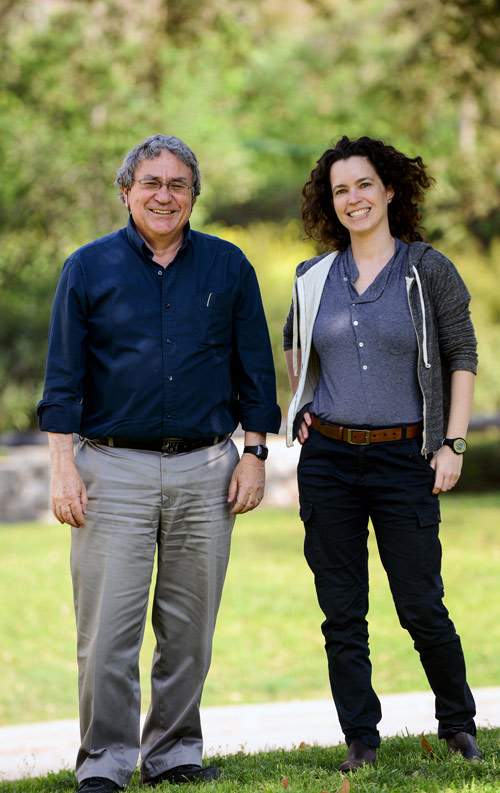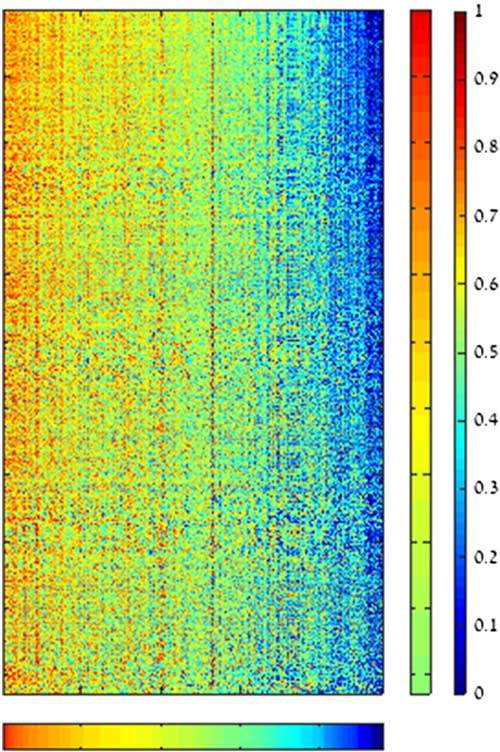It has been known for a while that schizophrenia has a strong genetic component: The proof comes from studies of identical twins. But when researchers look for genes associated with the disease, they are confronted with a profound muddle: Hundreds of genes appear to be involved, but upon closer inspection each only confers a slightly higher than normal risk of developing the disease.
Recent findings arising from a unique collaboration between researchers at the Weizmann Institute of Science and Shalvata Mental Health Center in Israel, and the Mount Sinai School of Medicine in New York, suggest a way out of this mire.
Such disease-encoding genes are generally identified in so-called genome-wide association studies. The idea is to compare genomic sequences of thousands of subjects – patients as well as healthy people – and search for tiny differences of just one or two “letters” in the genetic sequences that make up the genes. If certain variations appear more frequently in those with a disease such as schizophrenia than in the healthy population, one can start asking whether the change in that particular letter is connected to the disease.
But with hundreds of somewhat feeble candidates, the data dissolve into “noise.” There is little way to tell if the switched letter is an alternate spelling or punctuation, or whether it will be like substituting “pear” for “peach” in a recipe – a slight but possibly significant alteration to the final dish. To further complicate things, many of the substituted letters in the genomes of people with schizophrenia show up in so-called non-coding regions – those that do not contain instructions for making proteins but, rather, regulate such things as protein levels. These sequences are not only less well studied and harder to identify than the ones in coding regions; their functions are difficult to observe in standard lab tests.
Unraveling this mystery presented a compelling challenge to Dr. Libi Hertzberg, who is no stranger to challenges. Hertzberg had been a master’s student under
Prof. Eytan Domany, head of the computational biology group in the Institute’s Physics of Complex Systems Department. From there, she went on to Tel Aviv University to complete both an MD in the Sackler Faculty of Medicine and, concurrently, a PhD that was supervised, in part, by Domany. She is now at Shalvata Mental Health Center, as a resident in psychiatry, and, in addition to her demanding clinical work, has decided to research the basis of mental illness together with Domany.
Domany and Hertzberg teamed up with Prof. Vahram Haroutunian of Mount Sinai. Domany, who holds the Weizmann Institute’s Henry J. Leir Professorial Chair, had met Haroutunian at an annual conference hosted for its researchers by the Leir Charitable Foundation, and the two realized that Haroutunian had a unique resource that could help solve the mystery: He has a database of information gleaned from post-mortem brains that have been donated to his lab, including those from schizophrenia patients. From these, he can test the levels of the messenger molecules – mRNA – that are produced from the various genes. In other words, scientists can use these data to understand how the genetic information translates into action in various brain cells.
Now the team had two very different sets of information – genes identified in the broad, genome-wide studies and the mRNA levels from the brain database – giving them a sort of “filter” that enabled them to identify the genetic sequences whose slight misspelling was not only associated with the disease but also exhibited interesting patterns of expression in the brain.
The team then began to analyze their narrowed-down list of genes: The approach Domany has developed over the years looks for the actions of groups of genes, rather than searching for the effects of a single gene, and this strategy worked well for the schizophrenia data. Using algorithms he and his team have developed to first identify paired correlations and from these, clusters, they ultimately identified a collection of around 19 genes that clearly stood out from the noise.
Now the question was: What does this group of genes do? That question is far from simple: there are hundreds of ways that these genes could interact and thousands of possible effects of their actions. Further computational analysis of the data revealed that the cluster of genes they had identified is associated with the functioning of the cells’ calcium channels. Nerve cells rely on these channels in their membranes to regulate the uptake of calcium ions, which excite the cells to action. Additional tests using information from the genome-wide studies and databases of protein interaction analyses supported their results.
Hertzberg says that these findings give strong backing to the idea that calcium regulation plays a central role in schizophrenia, and adds that the genetic interactions they have revealed might present useful targets for drugs. Domany points out that the next step is to understand exactly how the regulation of calcium signaling goes awry in the disease – a step that will require much more research. But the scientists are hopeful that their results, in addition to pointing to a fruitful approach to understanding how genes contribute to neuropsychological disease might, in the future, lead to both better diagnostics and possible treatments for schizophrenia.
Prof. Eytan Domany’s research is supported by the Leir Charitable Foundations; and the Louis and Fannie Tolz Collaborative Research Project. Prof. Domany is the incumbent of the Henry J. Leir Professorial Chair.

